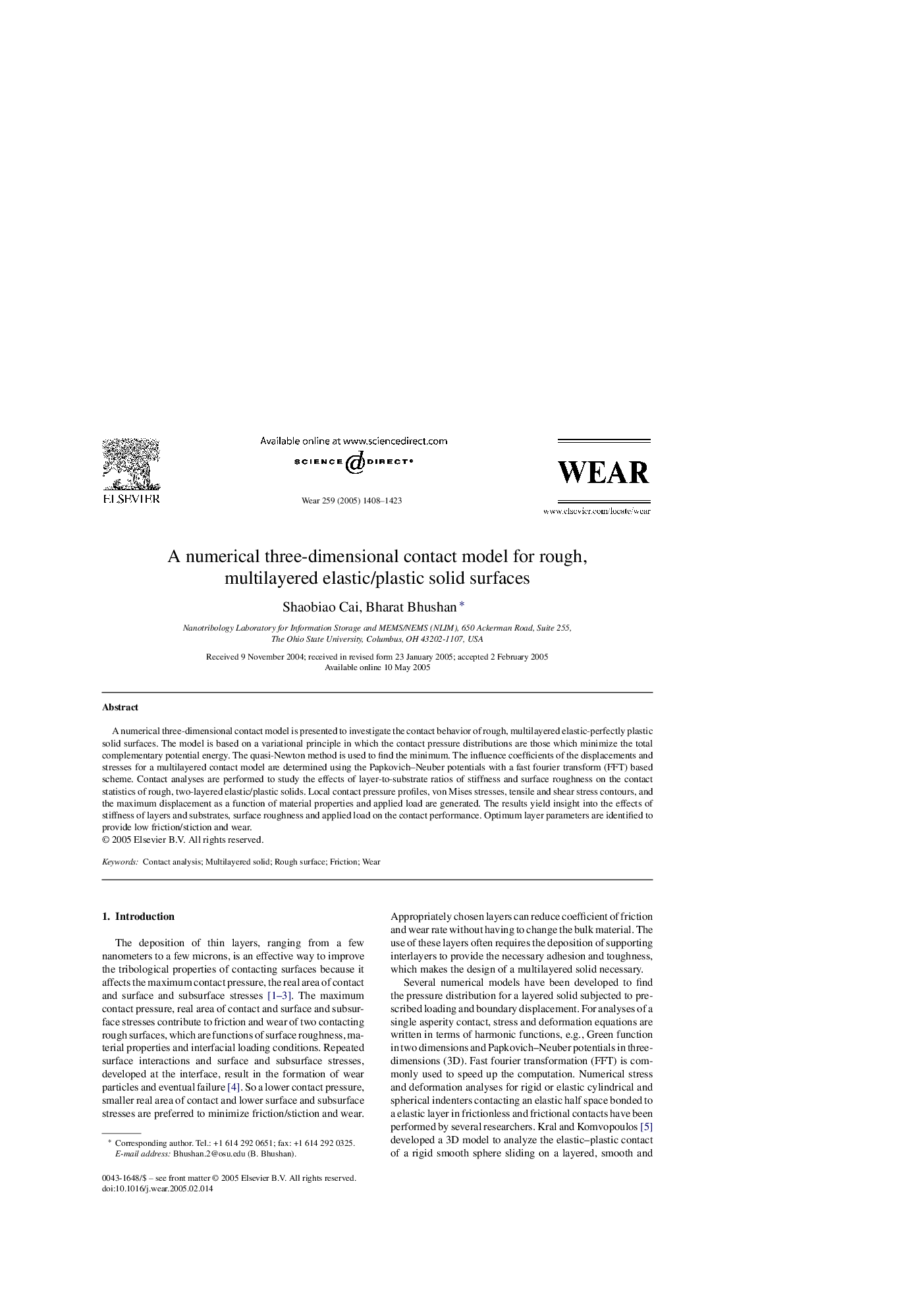| Article ID | Journal | Published Year | Pages | File Type |
|---|---|---|---|---|
| 9679367 | Wear | 2005 | 16 Pages |
Abstract
A numerical three-dimensional contact model is presented to investigate the contact behavior of rough, multilayered elastic-perfectly plastic solid surfaces. The model is based on a variational principle in which the contact pressure distributions are those which minimize the total complementary potential energy. The quasi-Newton method is used to find the minimum. The influence coefficients of the displacements and stresses for a multilayered contact model are determined using the Papkovich-Neuber potentials with a fast fourier transform (FFT) based scheme. Contact analyses are performed to study the effects of layer-to-substrate ratios of stiffness and surface roughness on the contact statistics of rough, two-layered elastic/plastic solids. Local contact pressure profiles, von Mises stresses, tensile and shear stress contours, and the maximum displacement as a function of material properties and applied load are generated. The results yield insight into the effects of stiffness of layers and substrates, surface roughness and applied load on the contact performance. Optimum layer parameters are identified to provide low friction/stiction and wear.
Related Topics
Physical Sciences and Engineering
Chemical Engineering
Colloid and Surface Chemistry
Authors
Shaobiao Cai, Bharat Bhushan,
